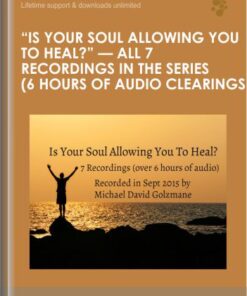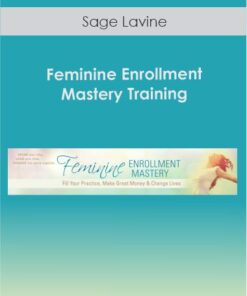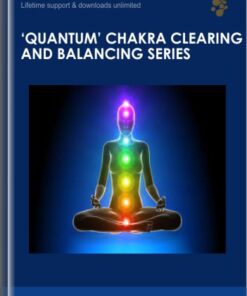2-Day Certificate Course: ARC Trauma Treatment For Children and Adolescents
Question and Answer
What is Watch?
Watch is and discover what over 300 agencies and child-serving systems already know..
How does Watch discover?
Watch and discover what over 300 agencies and child-serving systems already know.
What is ARC?
ARC is gives you a roadmap to cultivate attachment in traumatized kids, build the self-regulatory skills they need to identify and manage powerful emotions, and establish a positive sense of identity that will set the stage for a healthy and fulfilling adult life..
How does ARC gives?
ARC gives you a roadmap to cultivate attachment in traumatized kids, build the self-regulatory skills they need to identify and manage powerful emotions, and establish a positive sense of identity that will set the stage for a healthy and fulfilling adult life.
What is 2-Day Certificate Course:?
2-Day Certificate Course: is Purchase ARC Trauma Treatment For Children and Adolescents courses at here with PRICE $299.99 $124 Treating a child in isolation doesn’t work..
How does 2-Day Certificate Course: Purchase?
Purchase 2-Day Certificate Course: ARC Trauma Treatment For Children and Adolescents courses at here with PRICE $299.99 $124 Treating a child in isolation doesn’t work.
What is trauma?
trauma is Without addressing with both the child and caregiver system your efforts will fail to reach their greatest therapeutic effectiveness..
How does trauma addressing?
Without addressing trauma with both the child and caregiver system your efforts will fail to reach their greatest therapeutic effectiveness.
What is Dr. Margaret Blaustein,?
Dr. Margaret Blaustein, is Co-developed by ARC (Attachment, Regulation and Competency) is a flexible framework proven to enhance effective trauma treatment by intervening with both the child and the caregiver system; allowing you to foster the supportive environment necessary for healthy development and lasting change..
How does Dr. Margaret Blaustein, Co-developed?
Co-developed by Dr. Margaret Blaustein, ARC (Attachment, Regulation and Competency) is a flexible framework proven to enhance effective trauma treatment by intervening with both the child and the caregiver system; allowing you to foster the supportive environment necessary for healthy development and lasting change.
What is THIS COURSE?
THIS COURSE is IS YOUR CHANCE TO LEARN THE ARC FRAMEWORK FROM DR. BLAUSTEIN HERSELF!.
How does THIS COURSE IS?
THIS COURSE IS YOUR CHANCE TO LEARN THE ARC FRAMEWORK FROM DR. BLAUSTEIN HERSELF!
What is Watch?
Watch is and discover what over 300 agencies and child-serving systems already know..
How does Watch discover?
Watch and discover what over 300 agencies and child-serving systems already know.
What is ARC?
ARC is gives you a roadmap to cultivate attachment in traumatized kids, build the self-regulatory skills they need to identify and manage powerful emotions, and establish a positive sense of identity that will set the stage for a healthy and fulfilling adult life..
How does ARC gives?
ARC gives you a roadmap to cultivate attachment in traumatized kids, build the self-regulatory skills they need to identify and manage powerful emotions, and establish a positive sense of identity that will set the stage for a healthy and fulfilling adult life.
What is This offer?
This offer is may not come your way again!.
How does This offer may not come?
This offer may not come your way again!
What is this rare opportunity?
this rare opportunity is Don't miss out on to transform your treatment of childhood trauma and achieve sustainable positive outcomes for this most vulnerable population Establish the meaning of complex trauma and communicate three consequences of early complex trauma exposure..
How does this rare opportunity Don't miss out?
Don't miss out on this rare opportunity to transform your treatment of childhood trauma and achieve sustainable positive outcomes for this most vulnerable population Establish the meaning of complex trauma and communicate three consequences of early complex trauma exposure.
What is the role of routines?
the role of routines is Explore in the caregiving system to enhance a child’s felt safety and stability, and specify why this is important in treatment..
How does the role of routines Explore?
Explore the role of routines in the caregiving system to enhance a child’s felt safety and stability, and specify why this is important in treatment.
What is the core attachment targets of ARC?
the core attachment targets of ARC is Characterize how apply to the participant and/or providers within the participant’s system..
How does the core attachment targets of ARC Characterize?
Characterize how the core attachment targets of ARC apply to the participant and/or providers within the participant’s system.
What is one aspect of self and identity?
one aspect of self and identity is Articulate at least that may be impacted in trauma-exposed youth..
How does one aspect of self and identity Articulate at least?
Articulate at least one aspect of self and identity that may be impacted in trauma-exposed youth.
What is caregiver ability?
caregiver ability is Determine how to identify their own responses to trauma reactions is critical to the recovery process in children who have experienced trauma..
How does caregiver ability Determine?
Determine how caregiver ability to identify their own responses to trauma reactions is critical to the recovery process in children who have experienced trauma.
What is Employ techniques?
Employ techniques is that enable caregivers to depersonalize trauma-driven behaviors and reframe responses to trauma reactions..
How does Employ techniques enable?
Employ techniques that enable caregivers to depersonalize trauma-driven behaviors and reframe responses to trauma reactions.
What is two patterns of youth dysregulation,?
two patterns of youth dysregulation, is Characterize at least including function of the adaptation..
How does two patterns of youth dysregulation, Characterize at least?
Characterize at least two patterns of youth dysregulation, including function of the adaptation.
What is strategies?
strategies is Establish how for teaching children to identify physiological responses to stress can help them understand and regulate the arousal response..
How does strategies Establish?
Establish how strategies for teaching children to identify physiological responses to stress can help them understand and regulate the arousal response.
What is Employ?
Employ is exercises to help traumatized children identify safe resources and develop effective communication styles..
How does Employ exercises?
Employ exercises to help traumatized children identify safe resources and develop effective communication styles.
What is consistent emotional responses?
consistent emotional responses is Support how from caregivers can help establish secure attachment..
How does consistent emotional responses Support?
Support how consistent emotional responses from caregivers can help establish secure attachment.
What is self-identity?
self-identity is Determine how can be developed through exercises that establish positive self-recognition and a future orientation..
How does self-identity Determine?
Determine how self-identity can be developed through exercises that establish positive self-recognition and a future orientation.
What is activities?
activities is Specify how that target executive function can be incorporated into trauma treatment to improve impulse control and build problem solving and negotiating skills..
How does activities Specify?
Specify how activities that target executive function can be incorporated into trauma treatment to improve impulse control and build problem solving and negotiating skills.
What is a Foundation?
a Foundation is Build for Treatment Tune into engagement Factors that affect engagement in trauma treatment Strategies to support child, caregiver, and provider engagement The role of education Tune in to the role of education in thoughtful trauma intervention Use of routines and rhythms to build safety and support goals Strategies to increase felt safety through predictability Build self-regulation with daily routines Use of structures to support treatment goals How to Foster Attachment: Work with the Caregiver System to Build a Safe-Enough Container Manage caregiver responses to trauma reactions The cycle of dysregulation between child and caregiver Tools to help caregivers to recognize their own emotions Address feelings of helplessness, inadequacy and rejection Approaches and techniques to teach caregivers to: Identify their triggers Depersonalize trauma driven behaviors Cognitively reframe responses to trauma reactions Use self-talk to counter self-blame Handle “button-pushing” behavior Attunement strategies for positive attachment Learn the emotional language of kids who have experienced trauma Become a “Feeling Detective” to read emotional cues Identify child’s trauma triggers and responses 5 steps to master reflective listening – help kids feel heard The power of building effective responses in establishing secure attachment Use attunement skills to understand behaviors Identify the “go-to’s” of behavior response Experiment purposefully with other strategies Regulation: Manage Out of Control Emotions and Reduce Difficult Behaviors Identify triggers and emotional responses Use labeling to raise awareness of feelings How feelings show up in thoughts, behaviors and the body Where feelings and body states come from Modulate emotion and the body’s alarm system ”Feelings Toolkit” for emotional experience tolerance Teach kids to understand degrees of feeling Connect children to their bodies Understand and regulate the arousal response Competency: Build Resilience and Establish Identity and Sense of Self Explore relationships and build connections Help children understand the role of relationships Identify safe resources and healthy relationships Approaches to develop effective communication skills Strengthening executive functions Ways to build problem solving and negotiation skills Impulse control exercises Self-identity developments How to explore individuality Techniques to establish positive self-recognition Contextual aspects of self and identity Approaches to develop future orientation Trauma Experience Integration Understand state-based treatment The role of the core ARC targets in integrating traumatic experiences Tag: 2-Day Certificate Course: ARC Trauma Treatment For Children and Adolescents Review..
How does a Foundation Build?
Build a Foundation for Treatment Tune into engagement Factors that affect engagement in trauma treatment Strategies to support child, caregiver, and provider engagement The role of education Tune in to the role of education in thoughtful trauma intervention Use of routines and rhythms to build safety and support goals Strategies to increase felt safety through predictability Build self-regulation with daily routines Use of structures to support treatment goals How to Foster Attachment: Work with the Caregiver System to Build a Safe-Enough Container Manage caregiver responses to trauma reactions The cycle of dysregulation between child and caregiver Tools to help caregivers to recognize their own emotions Address feelings of helplessness, inadequacy and rejection Approaches and techniques to teach caregivers to: Identify their triggers Depersonalize trauma driven behaviors Cognitively reframe responses to trauma reactions Use self-talk to counter self-blame Handle “button-pushing” behavior Attunement strategies for positive attachment Learn the emotional language of kids who have experienced trauma Become a “Feeling Detective” to read emotional cues Identify child’s trauma triggers and responses 5 steps to master reflective listening – help kids feel heard The power of building effective responses in establishing secure attachment Use attunement skills to understand behaviors Identify the “go-to’s” of behavior response Experiment purposefully with other strategies Regulation: Manage Out of Control Emotions and Reduce Difficult Behaviors Identify triggers and emotional responses Use labeling to raise awareness of feelings How feelings show up in thoughts, behaviors and the body Where feelings and body states come from Modulate emotion and the body’s alarm system ”Feelings Toolkit” for emotional experience tolerance Teach kids to understand degrees of feeling Connect children to their bodies Understand and regulate the arousal response Competency: Build Resilience and Establish Identity and Sense of Self Explore relationships and build connections Help children understand the role of relationships Identify safe resources and healthy relationships Approaches to develop effective communication skills Strengthening executive functions Ways to build problem solving and negotiation skills Impulse control exercises Self-identity developments How to explore individuality Techniques to establish positive self-recognition Contextual aspects of self and identity Approaches to develop future orientation Trauma Experience Integration Understand state-based treatment The role of the core ARC targets in integrating traumatic experiences Tag: 2-Day Certificate Course: ARC Trauma Treatment For Children and Adolescents Review.
What is 2-Day Certificate Course:?
2-Day Certificate Course: is ARC Trauma Treatment For Children and Adolescents download..
How does 2-Day Certificate Course: download.?
2-Day Certificate Course: ARC Trauma Treatment For Children and Adolescents download.
What is 2-Day Certificate Course:?
2-Day Certificate Course: is ARC Trauma Treatment For Children and Adolescents discount..
How does 2-Day Certificate Course: discount.?
2-Day Certificate Course: ARC Trauma Treatment For Children and Adolescents discount.
What is 2-Day Certificate Course:?
2-Day Certificate Course: is Purchase ARC Trauma Treatment For Children and Adolescents courses at here with PRICE $299.99 $124.
How does 2-Day Certificate Course: Purchase?
Purchase 2-Day Certificate Course: ARC Trauma Treatment For Children and Adolescents courses at here with PRICE $299.99 $124
 "Is Your Soul Allowing You To Heal?" -- All 7 Recordings in the Series (6 Hours of Audio Clearings)
1 × $83.00
"Is Your Soul Allowing You To Heal?" -- All 7 Recordings in the Series (6 Hours of Audio Clearings)
1 × $83.00 10 Best-Ever Anxiety Treatment Techniques - Margaret Wehrenberg
1 × $164.00
10 Best-Ever Anxiety Treatment Techniques - Margaret Wehrenberg
1 × $164.00 Aidan Booth and Steve Clayton - 100k Factory Revolution
1 × $137.00
Aidan Booth and Steve Clayton - 100k Factory Revolution
1 × $137.00 Conversation And Communication Mastery - Erik Kiton
1 × $22.00
Conversation And Communication Mastery - Erik Kiton
1 × $22.00 4X Cash Compounder
1 × $30.00
4X Cash Compounder
1 × $30.00 10 Steps to Learn Anything Quickly - John Sonmez
1 × $104.00
10 Steps to Learn Anything Quickly - John Sonmez
1 × $104.00 Sage Lavine - Feminine Enrollment Mastery Training
1 × $85.00
Sage Lavine - Feminine Enrollment Mastery Training
1 × $85.00 $100K Online Marketing Kit – Staci Ann
2 × $23.00
$100K Online Marketing Kit – Staci Ann
2 × $23.00 101 Practical Strategies for the Treatment of GAD, Panic, OCD, Social Anxiety Disorder, Phobias and Insomnia - Jennifer L. Abel
1 × $124.00
101 Practical Strategies for the Treatment of GAD, Panic, OCD, Social Anxiety Disorder, Phobias and Insomnia - Jennifer L. Abel
1 × $124.00 12 Minute Stage Crazy - Body of a Rock Star
1 × $22.00
12 Minute Stage Crazy - Body of a Rock Star
1 × $22.00 10x Launches - Copy hacker - Ry Schwartz
1 × $92.00
10x Launches - Copy hacker - Ry Schwartz
1 × $92.00 Shapeshifting Your Reality - John Perkins
1 × $92.00
Shapeshifting Your Reality - John Perkins
1 × $92.00 Pain Management - Dr. Paul Langlois
1 × $35.00
Pain Management - Dr. Paul Langlois
1 × $35.00 'Quantum' Chakra Clearing and Balancing Series - Jonette Crowley
1 × $52.00
'Quantum' Chakra Clearing and Balancing Series - Jonette Crowley
1 × $52.00 1-Hour Home Selling Machine – Wolff Couple
1 × $293.00
1-Hour Home Selling Machine – Wolff Couple
1 × $293.00 Management of the Burn Patient - Dr. Paul Langlois
1 × $35.00
Management of the Burn Patient - Dr. Paul Langlois
1 × $35.00 16 Seminar Home Study Course – Lawrence G. McMillan
1 × $60.00
16 Seminar Home Study Course – Lawrence G. McMillan
1 × $60.00 10 Steps to Greater Confidence and Self-Esteem - Alexis Meads
10 Steps to Greater Confidence and Self-Esteem - Alexis Meads
 12 Dimensions of Mastery (Lifebook Challenge)
12 Dimensions of Mastery (Lifebook Challenge)
 123 Manifest It - Marlenea Johnson
123 Manifest It - Marlenea Johnson
 21 Day Inner Healing Journey - Jimmy Evans
21 Day Inner Healing Journey - Jimmy Evans